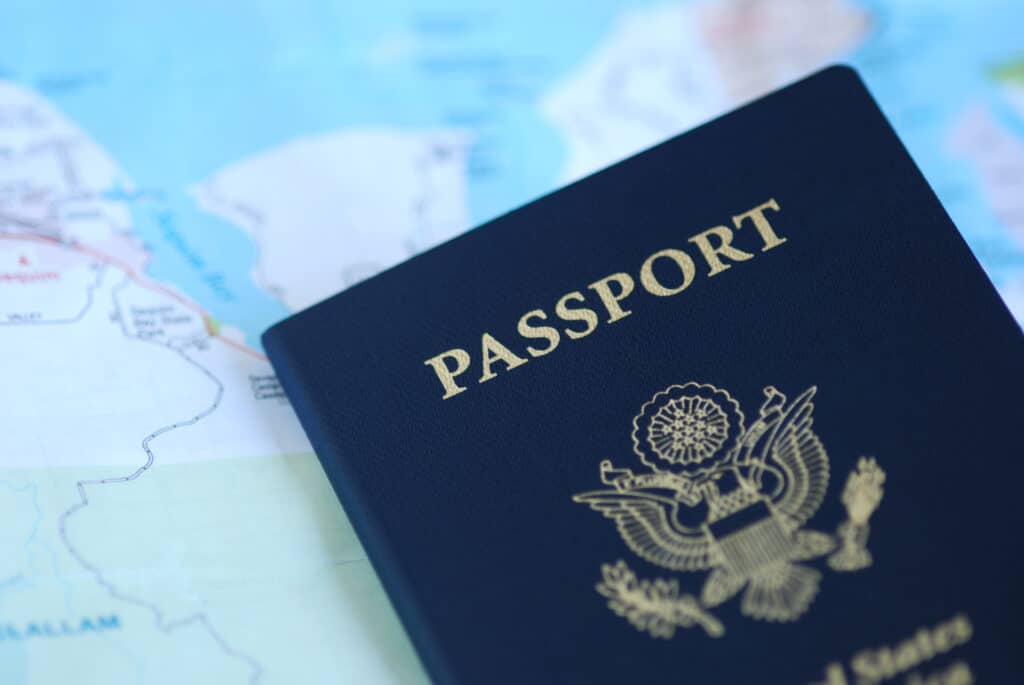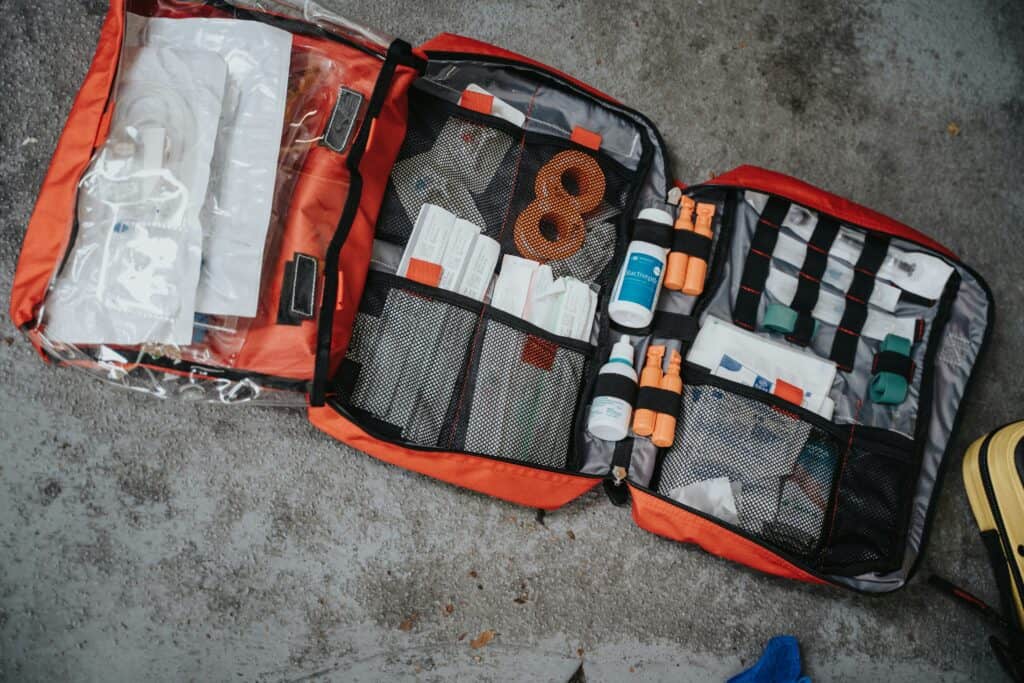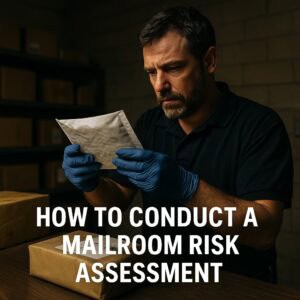Losing or having your passport stolen while overseas can turn your dream vacation into a stressful situation. A passport is not only an essential travel document, but it also serves as proof of identity and citizenship. In such a situation, knowing how to deal with a stolen passport is crucial for minimizing anxiety and ensuring a smooth resolution.
The first step in dealing with a stolen passport is reporting the loss to the proper authorities. Contacting the local police and the nearest U.S. Embassy or Consulate as soon as possible is essential for safeguarding your personal information and preventing potential identity theft. In addition to reporting the incident, travelers should also gather the necessary documentation, such as a copy of their passport and any travel visas, to expedite the replacement process.
Obtaining a replacement passport while abroad involves visiting an official U.S. government office in the country you are visiting. Following the necessary steps, including submitting the required documents and paying any applicable fees, will ensure you obtain a temporary or full-validity passport that allows you to continue your journey and return home safely. Being prepared and knowledgeable about this process can significantly reduce stress and help turn an unfortunate situation into a manageable one.
Identifying a Stolen Passport
When traveling abroad, having your passport stolen can be a distressing and challenging situation. It is crucial to remain calm and act quickly to minimize the potential risk associated with a stolen passport. The first step in dealing with this situation is identifying that your passport is indeed stolen.
One should retrace their steps and thoroughly search their belongings to ensure that the passport is not misplaced. If after searching diligently, the passport is still not found, it’s safe to assume that it has been stolen.
Being aware of the risks involved with a stolen passport is essential. A stolen passport can be used for various fraudulent activities such as identity theft, illegal border crossings, and other criminal activities. Moreover, the stolen passport may contain sensitive personal information, putting the individual at risk for further crimes.
Once it has been confirmed that the passport is indeed stolen, the individual should promptly take the following steps:
- Contact the nearest embassy or consulate to report the lost or stolen passport and seek guidance on the next steps
- File a report with local law enforcement authorities detailing the theft
- Gather any necessary documents and identifiers, such as a photocopy of the stolen passport, driver’s license, or other forms of identification to aid in obtaining a replacement
By quickly identifying the theft and acting promptly, travelers can minimize the risks and successfully navigate through the challenges of having a stolen passport abroad.
First Steps to Take
Stay Calm and Don’t Panic
It’s essential to remain calm and composed when dealing with a stolen passport abroad. Panicking will only make the situation more difficult to handle. Take a deep breath, and remember that there are procedures in place to help you through this situation.
Contact Local Authorities
Your next step should be to contact the local authorities in the country you are in. They can provide guidance on what to do next and direct you to the nearest police station to file a report. Additionally, they might have information about any recent thefts or pickpocketing incidents in the area that could be helpful.
File a Police Report
Upon reaching the police station, you need to file a police report detailing the theft of your passport. Be prepared to provide information such as your name, date of birth, passport number, and the circumstances surrounding the theft. The police report will serve as documentation of the incident and will be required when applying for a replacement passport at the nearest U.S. Embassy or Consulate.
Gathering Necessary Documents
When dealing with a stolen passport abroad, it’s essential to have certain documents on hand to help streamline the process of obtaining a replacement. This section will outline the key documents you should gather.
Identification Documents
When reporting a stolen passport and applying for a new one, you’ll need to provide alternative identification documents to prove your identity and citizenship. Examples of acceptable identification documents include:
- Original birth certificate or a certified copy
- Driver’s license
- State-issued ID card
- Military ID
- Social Security card
Ensure you have at least one or two forms of identification, preferably with a photo, to facilitate the process with the embassy or consulate.
Travel Itinerary
It’s important to have a copy of your travel itinerary, including flights, hotel reservations, and any planned activities or tours. This information will allow the embassy or consulate to better understand your travel plans and expedite the replacement process if necessary. Keep both digital and physical copies of your itinerary on hand for easy access.
Digital and Photocopies
In addition to physical copies of identification documents and your travel itinerary, make sure to have digital and photocopies of your original passport and other essential documents. You can store these digital files in a secure cloud service or on a USB drive. Having these copies readily available can prove invaluable in expediting the replacement process and providing additional documentation to support your claim of a stolen passport.
In summary, having the necessary identification documents, travel itinerary, and both digital and photocopies of originals will make dealing with a stolen passport abroad significantly easier. Remember to keep your documents secure and easily accessible to avoid any complications during your travels.
Contacting Your Embassy or Consulate
Locating the Nearest U.S. Embassy
When dealing with a stolen passport abroad, it’s essential to locate the nearest U.S. embassy or consulate. This can be done by visiting the U.S. Department of State website and searching for the desired country. Additionally, one can reach out to friends, family, or local authorities for guidance in finding the closest embassy or consulate.
Providing Contact Information
After locating the nearest U.S. embassy or consulate, it’s crucial to provide accurate contact information for consular staff to communicate with you. Ensure that the necessary information such as full name, date of birth, current location (city and country), and contact details, like an email address and phone number, are readily available. This will allow consular officers to reach out effectively during the process of obtaining a replacement passport.
Communicating with Consular Staff
Once communication is established with the U.S. embassy or consulate staff, be prepared to answer questions and provide documentation to verify your identity and citizenship. This may include photocopies of your stolen passport, photo identification, and other relevant documents.
Consular staff can assist in various ways, including providing guidance on obtaining replacement passports and offering information on local resources or additional support. While communicating with consular officers, it’s essential to remain patient, respectful, and cooperative. Remember, they are there to help you during this stressful situation.
By following these steps – locating the nearest U.S. embassy or consulate, providing accurate contact information, and maintaining open communication with consular staff – you will be on your way toward resolving the issue of a stolen passport abroad.
Applying for a Replacement Passport
Filling Out DS-11 and DS-64 Forms
If your passport is lost or stolen abroad, you must apply for a replacement. First, fill out Form DS-11 for a new passport and Form DS-64 to report the lost or stolen one. When completing these forms, provide accurate information about your citizenship, personal details, and the circumstances of the lost or stolen passport. Keep in mind that intentionally providing false information may lead to serious consequences.
Paying Passport Fees
Once the forms are completed, you will need to pay the passport fees. The cost for a replacement passport will depend on the type of passport (book or card) and the applicant’s age (adult or child). Payment methods may vary depending on your location, so be sure to check with the U.S. embassy or consulate on how to pay the fees.
Obtaining an Emergency or Limited-Validity Passport
In some cases, an emergency or limited-validity passport may be issued to a U.S. citizen who needs to travel urgently. This type of passport is generally issued by a U.S. embassy or consulate and can be used to return to the United States or continue traveling for a limited period. It is essential to contact the nearest U.S. embassy or consulate immediately after losing your passport and explain your situation. They will assess if you qualify for an emergency passport and guide you through the process.
Receiving a Full-Validity Passport
After returning to the United States with an emergency or limited-validity passport, you should apply for a full-validity passport. This process typically takes four to six weeks, but you can expedite it if necessary. If you have a Global Entry membership, be sure to update its information with your new passport details.
When you receive your new passport, store it in a safe place, and consider keeping a photocopy or digital copy as a backup. Additionally, it is a good idea to have travel insurance that covers the hassle and potential expenses related to a lost or stolen passport.
Traveling After a Stolen Passport
Using Travel Insurance
Travel insurance can be a lifesaver when dealing with a stolen passport abroad. Many travel insurance policies offer coverage for passport theft or loss, which can help cover the costs of obtaining a replacement passport, additional accommodations, and adjusting your travel plans. Make sure to contact your travel insurance provider as soon as you realize your passport is missing. They will guide you through the necessary steps and inform you of the documents you need to provide, such as a police report.
It’s essential to carefully review your travel insurance policy before your trip to understand what is covered and the required documentation. Remember that not all policies are equal, and some may offer more extensive assistance in case of passport theft.
Adjusting Travel Itinerary
A stolen passport can cause delays and changes to your plans, so it’s crucial to be flexible with your travel itinerary. Contact your airline, hotel, or any other service providers to inform them of your situation and discuss the options for rescheduling or canceling your bookings. Keep in mind that some companies may have specific policies regarding lost or stolen passports, and fees may apply for changes or cancellations.
While you are waiting for your replacement passport, use the time to explore the local area or visit attractions close to your accommodations. Remember to carry your government-issued photo ID with you, as you may need it when attempting to access certain venues or services.
In conclusion, experiencing a stolen passport abroad can be a stressful situation, but with proper travel insurance coverage and a flexible travel itinerary, you can minimize the impact on your trip. Remember to act quickly, follow the necessary procedures, and stay in contact with the relevant authorities throughout the process.
Preventing Identity Theft

One of the major concerns when dealing with a stolen passport is the risk of identity theft. To minimize this risk, there are several precautions you can take both before and after your passport is stolen.
Firstly, before traveling, make digital copies of your passport and other important documents. Store them in a secure, password-protected location, such as an encrypted cloud storage service. This will allow you to access the information if necessary and provide proof of identity to authorities in case of theft.
When traveling, always be aware of your surroundings and keep an eye on your belongings. Pickpocketing and theft can happen in crowded places, so be cautious in public transport, tourist attractions, and busy streets. Consider using a hidden money belt or neck pouch to store your passport and other valuables securely.
If you suspect your passport has been stolen, report the theft immediately to the nearest embassy or consulate, as well as local authorities. They can provide assistance in obtaining a replacement passport and prevent potential identity theft by invalidating your lost passport. Also, consider placing a fraud alert on your credit reports with the major credit bureaus, as this can help monitor any unauthorized activities on your accounts.
In case you become a victim of identity theft, IdentityTheft.gov offers step-by-step advice that can help limit the damage, report identity theft, and fix your credit. Remember, being vigilant before and during your travels can go a long way in preventing identity theft and ensuring a hassle-free trip.
Pre-Trip Preparations for Passport Safety
Make Copies of Important Documents
Before embarking on your trip abroad, it’s essential to make copies of your passport and other important documents. This will help expedite the process if your passport gets stolen and you need to obtain a replacement. A good rule of thumb is to make at least two copies of your passport: one to keep with you and another to leave with a trusted friend or family member. You can also consider scanning a copy and storing it in a secure cloud storage service for easy access in an emergency. Additionally, don’t forget to make copies of visas and other travel documents that are specific to your destination, such as Canada or Mexico.
Store Passports in a Safe Place
When traveling, it is important to keep your passport secure and concealed. Avoid storing it in an easy-to-pickpocket spot, such as a purse or backpack. Instead, consider using a hidden pouch or money belt to keep it close to your body. When you reach your accommodation, it’s wise to place your passport in the hotel safe or a secure spot inside your locked luggage.
Inform Emergency Contacts
Lastly, always inform your emergency contacts about your travel plans. Share your intended destinations, accommodation details, and key dates of your trip. This information will come in handy if you need to be reached or assisted in case of an emergency. Consider registering your trip with the Smart Traveler Enrollment Program (STEP) for US citizens or a similar service for citizens of other countries. This not only provides support in times of crisis but also shares important safety information about your travel destination.
By taking these pre-trip preparation steps, you can minimize the risk of losing your passport and set yourself up for a worry-free and enjoyable trip.
Frequently Asked Questions
What steps should I take immediately after my passport is stolen?
If your passport is stolen while you are abroad, the first thing you should do is report it to your local police and obtain a police report. Next, contact the nearest U.S. embassy or consulate to inform them of the theft and begin the process of obtaining a replacement passport or an emergency travel document.
How can I get an emergency travel document if my passport is stolen?
After reporting your stolen passport to the local police and U.S. embassy or consulate, they will assist you in obtaining an emergency travel document. This document allows you to return to your home country or continue your travels to another destination, depending on the specific circumstances.
Will I need to reapply for my visa after losing my passport?
Yes, if your visa was in the lost or stolen passport, you will need to reapply for a new visa. Contact the embassy or consulate of the country you planned to visit to find out the specific requirements for reapplying.
Is there a risk of identity theft with a stolen passport?
Yes, there may be a risk of identity theft when your passport is stolen, as it contains your personal information, such as your name, date of birth, and passport number. It is important to report the theft as soon as possible to limit the potential risk and protect your identity.
How long does it usually take to replace a stolen passport?
The time it takes to replace a stolen passport depends on the local U.S. embassy or consulate’s processing times and the specific circumstances around the theft. Generally, it may take anywhere from a few days to a few weeks to obtain a replacement passport. However, if you need to travel immediately, you may request an emergency travel document instead, which can be issued more quickly.
Can I still travel back to my home country without my passport?
If your passport is lost or stolen and you cannot obtain a replacement in time for your scheduled return, the U.S. embassy or consulate can provide you with an emergency travel document, which will allow you to return home. Always keep in contact with the embassy or consulate throughout the process to ensure you have the appropriate documents for your return.








